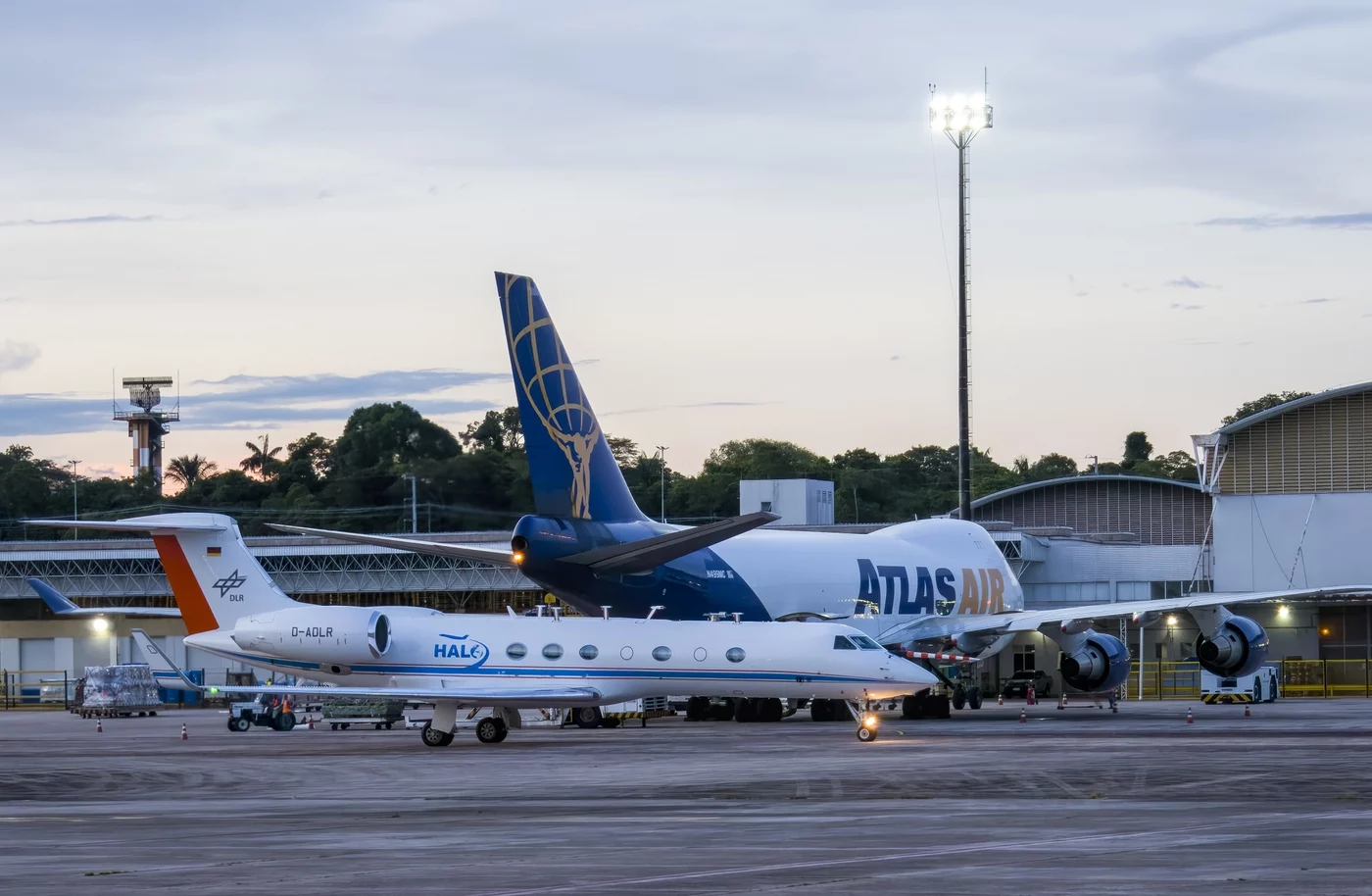Reviewed by Alex SmithDec 6 2022
The German-Brazilian research collaboration CAFE-Brazil (Chemistry of the Atmosphere: Field Experiment in Brazil) now receives the green light. A global research team led by the Max Planck Institute for Chemistry has been gathering information on the chemical processes in the relatively pristine atmosphere above the Brazilian Amazon jungle since yesterday.
 Arrival of the research aircraft HALO in Manaus, Brazil. Image Credit: Thomas Sprünken, DLR
Arrival of the research aircraft HALO in Manaus, Brazil. Image Credit: Thomas Sprünken, DLR
The study team will spend about 60 days conducting this research. Comprehending natural chemical processes, for instance, could assist explain how air pollution impacts the atmosphere. In addition to aircraft measurements, data is collected at the German-Brazilian research station ATTO using balloons, drones, and from the ground.
The large-scale expedition also comprises researchers from the Goethe University Frankfurt, the Universidade de São Paulo, and the Instituto Nacional de Pesquisas Espaciais, in addition to the MPI for Chemistry.
Around 70 researchers will travel to Manaus as part of the CAFE-Brazil trip in December and January. The airport in the Brazilian state of Amazonas will serve as the take-off and landing location for the 20 planned measurement flights with the research aircraft HALO (High Altitude and Long Range Research Aircraft).
The German Aerospace Center’s (DLR) HALO is designed for high altitudes and extended ranges and is utilized for scientific investigation into the Earth’s atmosphere. The research team has furnished HALO with 19 sensors for the CAFE-Brazil mission, which will measure dozens of parameters such as volatile organic compounds (VOCs), aerosols, carbon monoxide, sulfur and nitrogen oxides, ozone, methane, free radicals, and water.
We expect to gain new insights into the chemical processes in the atmosphere above the tropical rainforest and also into the interactions between the biosphere and the atmosphere, in order to better explain the fundamental role of the rainforest in the terrestrial system.
Jos Lelieveld, Director, Max Planck Institute for Chemistry
Jos Lelieveld is the Scientific Leader of the Research Expedition.
We are glad to be part of this important project and that it can finally get underway. Our focus is on the formation of particles from trace gases emitted by the forest.
Joachim Curtius, Experimental Atmospheric Scientist and Professor, Goethe University
CAFE-Brazil was supposed to be launched in the spring of 2020 but was postponed owing to the Coronavirus crisis.
The São Paulo University (USP) has been collaborating with Max Planck for almost 25 years, studying trace gases, aerosols, and clouds over the Amazon.
Amazonia is critical for global climate change, and we need a better understanding of the links between forest emissions, atmospheric transport and the impact of climate change in the forest. The strategies to preserve the Amazon Forest needs to be based on Science to be effective, and experiments like this provides the framework to protect the rain forest.
Paulo Artaxo, Physics Institute, São Paulo University
Luiz Augusto Machado from INPE and USP states, “The CAFÉ-Brazil experiment will provide new insights on the links between high altitude and forest biology, connected via vertical convection and downdrafts, and it complements nicely the long-term measurements at the ATTO tower.”
Measurement Flights in the Troposphere
Flights over the rainforest will follow predetermined patterns in order to determine vertical and horizontal profiles. The concept also involves helix flights, in which HALO will spiral from low altitudes up to 15 km in altitude.
The scientists hope to utilize the airplane observations to learn more about atmospheric oxidation processes in the troposphere above the Amazon rainforest, as well as how they affect the creation and evolution of aerosol particles, which are critical as cloud condensation nuclei.
The researchers also wish to know why the self-cleaning nature of the atmosphere does not weaken over the rainforest, despite the fact that massive volumes of hydroxyl radicals are constantly consumed. The chemical compound is regarded as an atmospheric detergent because it oxidizes pollutants like methane and forms water-soluble reaction products that are rinsed out of the air by rain.